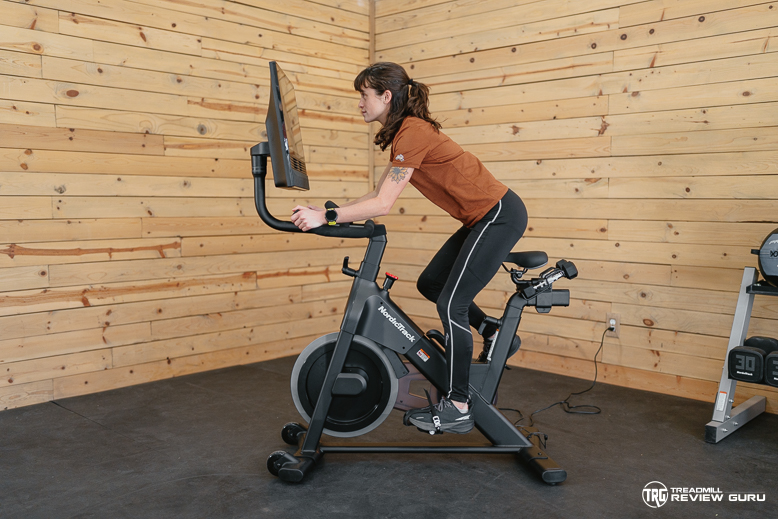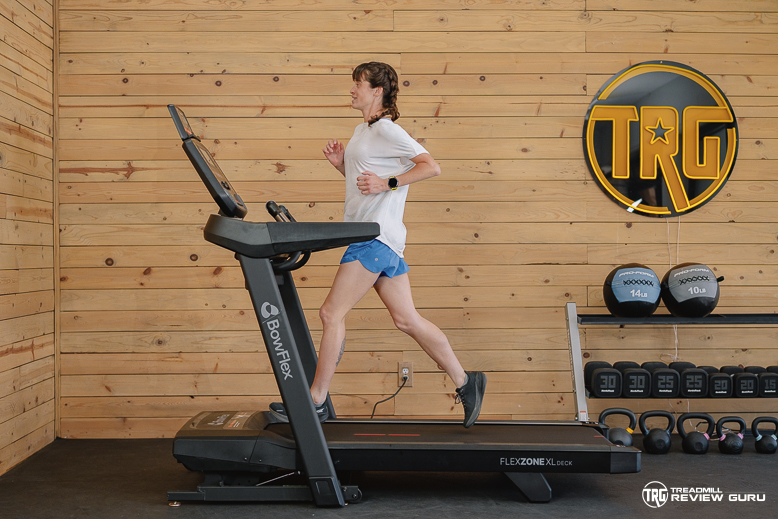I’ve traced the origins of the 10k step goal to Japan, explored its meaningfulness in the scientific literature, and walked thousands upon thousands of steps myself. While there’s not a magic number of steps you can take that will achieve everything you want, I have to admit that 10k steps is pretty good.
I walked up to 17k steps per day for one year, starting at 10k steps and slowly progressing to a ridiculous number. I never missed a day, and I have to admit, I felt great! My legs and feet have never felt stronger. Yet, there were some glaringly imperfect aspects of such a routine.
So, I’m here to help you improve upon the 10k step goal and tell you when you should forget it.

When to Ignore Your Daily Step Count
Some days, your step goal shouldn’t be your primary focus. If you place your step goal above all else, you might sacrifice your enjoyment of other types of cardio. It could also negatively impact your strength training routine or sleep.
Below you will find some of my top circumstances that disrupt your daily step goal.
Alternate Forms of Exercise

Cycling may not count toward a step goal, but it’s great exercise!
Outside of lazy days, the biggest obstacle I encountered when trying to hit my daily step goal was on very active days. They just weren’t walking or running days. Activities like swimming, cycling, and strength training, among others, don’t count toward a daily step goal, even though it seems like they should.
If hitting a specific number matters that much to you, you could try equating a certain number of active minutes to a certain number of steps. For instance, 10 minutes might equal 1000 steps. One mile is around 1500 to 2500 steps, depending on your stride length and speed. A 20-minute mile walk might be about 2000 steps, giving us the 10 minutes equals 1000 steps metric.
For most of you, I recommend forgetting your step goal entirely on these days. You might choose to track your daily active minutes on those days or every day. If you tend to cycle, swim, or weight train, this might make more sense.
You don’t want to give up forms of exercise you enjoy more or reduce the amount you strength train to accommodate a step goal, as these activities may be even better for your health.
Sleep
Getting enough sleep is crucial for your health and wellness, though many adults struggle to get the recommended amount of sleep. While taking a walk or getting out of bed can be a good strategy for nights when you’re tossing and turning, you don’t want to sacrifice quality sleep to meet your step goal on your fitness tracker.
Even if your step goal doesn’t keep you up at night, forcing yourself to wake up too early to accumulate steps may also be a problem. You should prioritize getting enough sleep. If that leaves you with less time to exercise, choose an exercise form, like a HIIT workout, that takes less time. These workouts can give you more bang for your buck.
You Need Additional Rest

Remember not to sacrifice your fitness by chasing a step goal when you really need more rest and recovery.
I run five days per week and rest on the other two days. As a result, I usually get well over 10k steps on those five days, but I sometimes get less than 5k on my rest days. While I could try to reach 10k steps on those rest days, I might not recover well enough if I did. For me, it’s a better choice to rest.
If you have days where you walk a lot and days where you walk little, try tracking your weekly steps instead of your daily steps. Allowing yourself to get extra rest on a couple of days per week may lead to better results than pushing yourself day in and day out.
Alternate Goals
If you loathe walking or hate trying to hit your step goal, maybe it’s not for you. Here are some alternate ways to track your weekly exercise that may be more sustainable.
- 1. Exercise Minutes: Track your minutes. You can even track your minutes spent in moderate versus vigorous exercise. If you really want to get into the data, try tracking your minutes in each heart rate or RPE zone.
- 2. Distance Per Week: Whether you are running, hiking, cycling, or swimming, tracking your weekly distance is a great alternative. Count up those daily miles and kilometers to progress toward a weekly total.
- 3. Note Your Good Choices: Walking more to reach a step goal is about making better choices throughout the day. Instead of fixating on a specific step goal, maybe it’s more appropriate for you to take note of when you choose to take the stairs instead of the elevator or park further from the store. These small wins can add up to big change!
- 4. Track Sedentary Time: Instead of tracking how many steps you take. Try tracking how much sitting you do. Can you get that number lower, even if you aren’t always walking? Movement is good for our bodies, even if it isn’t walking or running to accumulate steps.
Ten Thousand Steps
I can’t discount the 10k step goal entirely. It achieves many of the things it sets out to do. It can help you reduce sedentary time and increase daily physical activity. If your walks are brisk enough, it can help you reach the recommended number of minutes spent doing moderate or vigorous cardio exercise.
I like 10,000 steps because it’s a challenge but achievable for me. I am allowed to walk on an under-desk treadmill while I’m working. I have time to take a walk before or after work on most days. In the past, it was easy to get 10k steps while working in retail or walking between my college classes.
However, everyone has different schedules and professional expectations in their place of work. If your job does not permit you to walk much for eight or more hours per day, you may not realistically be able to reach 10k steps. That doesn’t mean you shouldn’t have a step goal. You might just need a lower number.
There are a couple of different strategies you can employ to find a better step goal.
First, you can walk as much as possible on an ideal day, recording the number of steps you take. Once you’ve walked as much as you possibly can, record the number of steps. Then, you can set your goal at 10 to 20% less than that total. That should give you a personalized number that’s a challenge but achievable even on less-than-ideal days.
Alternatively, you can track how many steps you currently take per day. I recommend taking an average across each of the days you work. You don’t want to include the weekend or other off days if your activity is drastically different on those days. Then, try to increase the number of steps by 10% week after week. Progress until the goal feels challenging but doable.
As a coach, I recommend adjusting your step goal if you are unable to meet it at least one-third of the time. Don’t be afraid to personalize your daily step goal or choose a different goal.

 АРХИВ
АРХИВ БОКС И ЕДИНОБОРСТВА
БОКС И ЕДИНОБОРСТВА Игровые виды спорта
Игровые виды спорта КАРДИОТРЕНАЖЕРЫ
КАРДИОТРЕНАЖЕРЫ МАССАЖНОЕ ОБОРУДОВАНИЕ
МАССАЖНОЕ ОБОРУДОВАНИЕ МЕДИЦИНА РЕАБИЛИТАЦИЯ
МЕДИЦИНА РЕАБИЛИТАЦИЯ СВОБОДНЫЕ ВЕСА
СВОБОДНЫЕ ВЕСА СИЛОВЫЕ ТРЕНАЖЕРЫ
СИЛОВЫЕ ТРЕНАЖЕРЫ Соревновательное оборудование
Соревновательное оборудование СПОРТ ДЛЯ ДЕТЕЙ
СПОРТ ДЛЯ ДЕТЕЙ СПОРТИВНОЕ ПИТАНИЕ И АКСЕССУАРЫ
СПОРТИВНОЕ ПИТАНИЕ И АКСЕССУАРЫ УЛИЧНЫЕ ТРЕНАЖЕРЫ
УЛИЧНЫЕ ТРЕНАЖЕРЫ ФИТНЕС И АЭРОБИКА
ФИТНЕС И АЭРОБИКА